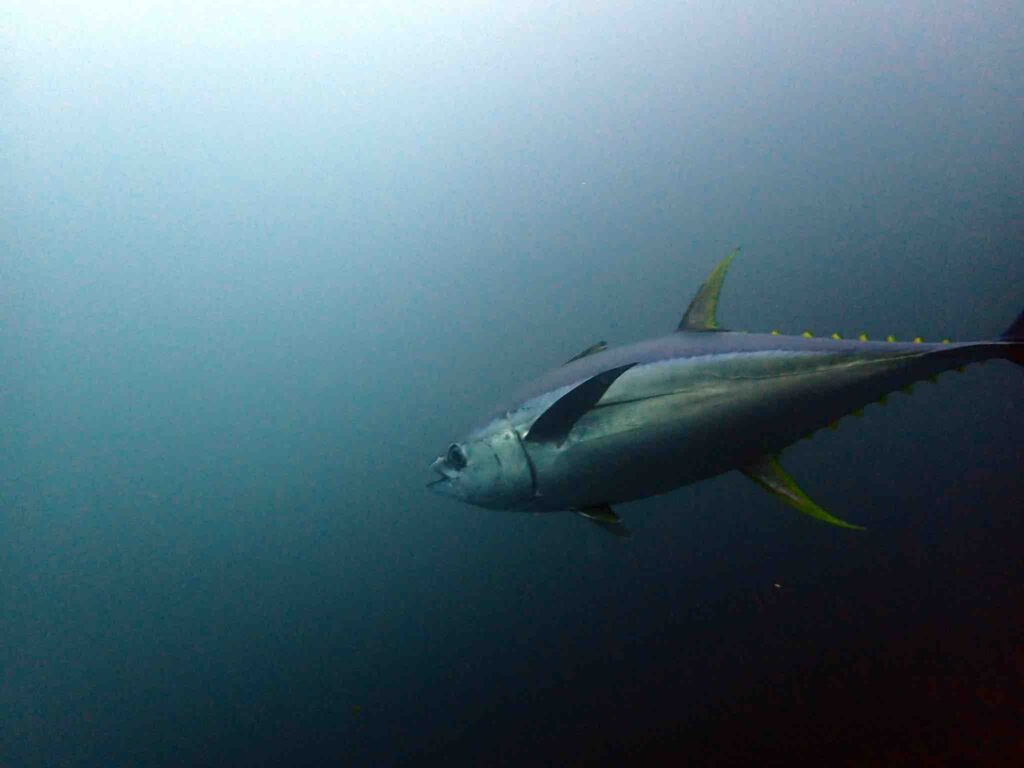Fotografía de ©timhe _ iNaturalist.
Resumen
Las aguas alrededor de la Reserva Marina de Galápagos (RMG) son importantes zonas de pesca para embarcaciones artesanales autorizadas que pescan dentro de la reserva, así como para flotas industriales nacionales y extranjeras que operan en la Zona Económica Exclusiva Insular (IEEZ) más amplia del Ecuador. Aunque no fueron diseñados originalmente para la gestión pesquera, los datos del Sistema de Identificación Automática (AIS) proporcionan información útil, de acceso abierto, casi en tiempo real y de alta resolución que permite un mayor seguimiento, particularmente alrededor de las Áreas Marinas Protegidas (AMP) y en áreas más allá. Jurisdicción Nacional. Este estudio utiliza datos AIS proporcionados por Global Fishing Watch para evaluar la distribución espacial y la dinámica estacional del esfuerzo pesquero por bandera de barco dentro de la RMG y la IEEZ de 2012 a 2021. Con base en el análisis de estimación de la densidad del núcleo, determinamos las áreas de uso principal ( 50%) y extensión espacial (95%) de las actividades pesqueras por flotas (ecuatorianas y extranjeras), tipos de artes y estaciones (cálidas, de diciembre a mayo; y frías, de junio a noviembre). Nuestros resultados muestran que la flota ecuatoriana registró la mayor cantidad de horas de pesca observadas en el área de estudio, con 32.829 horas en la IEEZ y 20.816 horas dentro de la RMG. Las banderas extranjeras con más horas de pesca observadas en la IEEZ fueron Panamá (3.245 horas) y Nicaragua (2.468,5 horas), mientras que en la RMG fueron la ‘Bandera Desconocida’ (4.991,4 horas) y Panamá (133,7 horas). Los buques pescaban empleando diferentes artes de pesca, pero las aguas de la RMG y la ZIE eran principalmente objetivo de atuneros cerqueros y palangres de deriva. La distribución espacial del esfuerzo pesquero exhibe una marcada variabilidad estacional, probablemente influenciada por migraciones estacionales de especies objetivo como atunes (p. ej., Thunnus albacares , T. obesus y Katsuwonus pelamis ), marlines (p. ej., Makaira nigricans ) y tiburones (p. ej. , Alopias pelágico ). La recopilación y uso de este tipo de información espacial y estacional es un paso esencial para comprender la dinámica de las actividades pesqueras en aguas nacionales y mejorar la gestión pesquera, particularmente en áreas y pesquerías menos estudiadas.
Conoce más del artículo científico en el siguiente enlace: https://doi.org/10.1371/journal.pone.0282374






